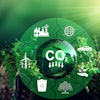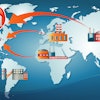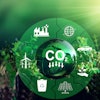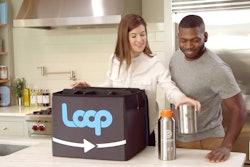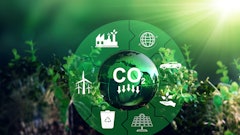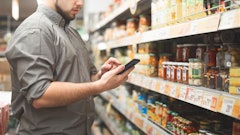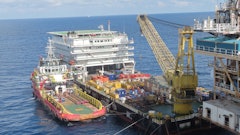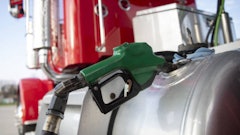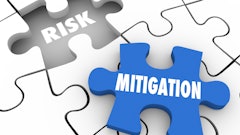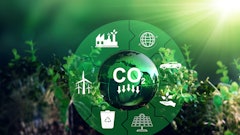
Sustainability in the global food supply chain is a story of complexities--from sourcing and farming methods to food production, packaging, transportation and logistics, all the way to consumption and disposal. And, while early efforts may have started with simple recycling and turning off unnecessary lights, today’s environmentally-minded companies measure their carbon and water footprint starting with suppliers to end-users by applying the most sophisticated tools. Following are quick looks into the kaleidoscope that comprises the shades of sustainability in the global food supply chain.
Ag Gag Legislation
A big part of sustainability and corporate social responsibility in general is transparency. While some methods used to uncover abuses of farm animals are highly controversial, it’s hard to argue that were it not for the work of some undercover animal rights activists, some of the most egregious treatment and conditions for farm animals would probably not have been exposed and corrected. Ultimately, it comes down to doing the right thing. There is room for improvement at many industrialized farms and American consumers have shown that they’re more willing than ever to support--and pay for--food that has been ethically produced. So-called “ag gag” legislation that attempts to silence whistleblowers isn’t good for anyone and it certainly doesn’t bode well for sustainability.
Better Consumption, Not Over Consumption
American consumers share responsibility for promoting sustainability in the food supply chain. According to the U.S. Department of Agriculture, Americans waste a whopping 40 percent of the food we produce. To drive this home, consider that, on average, Americans toss out 20 pounds of food every month, which adds up to about $2,275 annually for a family of four. It doesn’t help that restaurant portions having been growing right along side of Americans’ waistlines over the years. Overconsumption and waste are unsustainable and taxing our health, finances, and food production system. Food that’s dumped in landfills only adds to the problem.
Carbon Disclosure Project
The CDP gets a green “thumbs up” for its role in encouraging companies and cities to measure, disclose, manage and share environmental information. The international non-profit now holds the largest collection globally of primary climate change, water and forest risk commodities information and more companies are seeing the value in participating. Last month, the CDP released its latest analysis showing that if U.S. businesses start acting immediately to reduce emissions by 3 percent annually, they can save up to $190 billion in 2020 alone, or $780 billion over 10 years. Meanwhile, a recent survey conducted by the CDP revealed that over two-thirds of those polled believe climate change is a current or future risk to their business.
DuPont Food Security
DuPont has helped lead the quest for global food security by partnering with the Economist Intelligence Unit to create an index that measures the risks and factors that drive food security, including affordability, in 105 countries. The U.S., Denmark, Norway and France are currently ranked as the most “food-secure” nations in the world due to ample food supplies, high incomes, low spending on food relative to other outlays, and significant investment in agricultural research and development. However, several of the sub-Saharan countries that ranked lowest, like Mozambique, Ethiopia, Rwanda and Nigeria, will be among the world’s fastest growing economies over the next two years.
Early Pioneers
Responsible farming and environmental stewardship are hardly modern day pursuits and a number of early pioneers deserve credit for enlightening subsequent generations to the benefits of sustainability. Some of the first advocates included Sir Albert Howard, who warned of the dangers of relying on artificial fertilizers in his 1940 book, An Agriculture Testament. In fact, Sir Albert Howard’s writings so profoundly influenced American J.I. Rodale, that Rodale himself became a 20th century leader of the organic farming movement. Rodale’s 60-acre experimental farm near Emmaus, Pennsylvania became a training ground for many organic farmers. He wrote in 1954 that, “Organics is not a fad. It has been a long-established practice--much more firmly grounded than the current chemical flair represent agricultural practices are leading us downhill.” Another early pioneer, Henry Wallace, served as U.S. Agriculture Secretary from 1933 until 1940 (during the Dust Bowl), and established the Soil Conservation Service in 1935. At the same time, Rachel Carson’s bestselling book Silent Spring, published in 1962, was also widely responsible for raising awareness about the benefits of organic farming and the risks of pesticides such as DDT. In fact, Silent Spring helped spur “more than 40 bills in different state legislatures...governing the regulation of pesticide use,” according to writer David Kupfer in his blog post “Trailblazers, Heroes & Pioneers.”
Electricity Management and Conservation
Warehouses and cold storage providers, in particular, are dialed in to the importance of electricity management and conservation--simply put, they cannot afford to ignore it. The U.S. Energy Information Administration states that as of 2012, the average retail price in the U.S. for electricity was 11.91 cents per kWh, up from 8.72 cents only nine years prior. Of course, electricity rates for residential and commercial customers are only going to rise, which is why conservation coupled with renewable sources, like solar, are on virtually every warehouse operator’s radar. Many warehouses are embarking on LED lighting projects and supplementing that with motion detectors that switch off the lights when not in use. It’s estimating that motion detectors alone can save an extra 30 percent in energy on top of what’s already being saved by an LED lighting system. The initial outlay may seem steep, but local and federal subsidies can help ease the initial cost for many LED lighting installations and speed up the ROI.
Environmentally Friendly Packaging
A lot of environmentally friendly packaging has popped up on store shelves these past few years. In the food/bev space, Frito Lay’s Sun Chips brand was one of the first to get the ball rolling when it debuted its compostable bag in 2008—a plant-based bag that would break down in 14 weeks. Method soap made headlines last year when it introduced packaging made from plastic pollution floating in the ocean. Oakland, CA-based Ecologic Brands (a Food Logistics “Top Green Provider” in 2012) makes packaging with an outer shell made from 100 percent recycled cardboard and newspaper, that can be recycled 7 more times. For its part, Sunny Delight’s latest package redesign to a more square shape ultimately makes it easier and more compact to ship, in turn trimming the supply chain costs associated with transportation.
EPA’s SmartWay
When it comes to sustainability in the transportation sector, one of the best-known federal offerings is the U.S. Environmental Protection Agency’s SmartWay program. The free program, launched in 2004, is open to all freight shippers, truck carriers (including draymen), logistics firms, multimodal carriers, and rail carriers. Over the past nine years, SmartWay partners have saved 65 million barrels of oil--the equivalent of taking more than 5 million cars off the road for an entire year, says the EPA. In addition, “Over 3,000 U.S. corporations, including virtually all of the nation’s largest truck carriers, all the Class I rail companies, and many of the top Fortune 500 companies rely upon SmartWay’s supply chain accounting tools and methods,” adds the agency.
Farming For the Future
Business as usual--or farming as usual for that matter--won’t cut it going forward. While large-scale industrial farming has managed to feed millions for years, unintended consequences along with short-term thinking has compromised “the environment, public health, communities, and animal welfare,” according to SustainableTable. org. There is good news, however. Industry and academia are discovering new ways to produce food without negatively impacting the environment. Advancements in hydroponics are just one example, and New York-based BrightFarms is one of the stars. The company’s hydroponic systems recirculates water to grow tomatoes using up to twenty-five times less water than field-grown tomatoes, while lettuces and herbs grown hydroponically also use much less water. BrightFarms is keen on locating their greenhouses nearer to consumers too, even on the roof of a grocery store in one case. In March, BrightFarms announced that it was partnering with the Kansas City Port Authority to build a 100,000 square-foot greenhouse next to the Missouri River in Kansas City.
Food Financing and Science
Lab meat and plant-based egg substitutes-and don’t forget 3-D printed food-are some of the innovations getting the attention of major venture capitalists like Vinod Khosla. Earlier this year, Khosla-backed Hampton Creek Foods launched its first product, Beyond Eggs, that is intended to work as an egg replacement in baked goods. Beyond Eggs are made with peas, sunflower lecithin, canola, and natural gums. It’s vegan, gluten- and cholesterol-free and most importantly, tastes like the real thing. Last year, Bill Gates and Tony Blair were unable to differentiate Beyond Eggs from real eggs during a blind taste test. An article in Business-Week states that, “The venture capitalists behind these start-ups believe that climate change and the planet’s dwindling natural resources will put more pressure on the food chain and that the food industry will require sustainable alternatives.”
General Mills Worldwide Innovation Network (G-WIN)
General Mills’ invitation to innovators and entrepreneurs outside of the company to solve problems, come up with new packaging, suggest improvements to current processes, and offer up new ideas is an example of the openness and collaboration that contributes to finding sustainable solutions for the global food supply chain. G-WIN is also a symbolic step in the right direction towards breaking down the barriers that exist between big food companies and many consumers.
Going Paperless
Despite myriad advancements to streamline and automate supply chains, they remain hugely paper intensive. Regulatory compliance requirements, especially in the food supply chain, mean a lot of recordkeeping, while multiple hand-offs between supply chain partners add to the paper trail. However, it may very well be that manual and paper recordkeeping has reached the tipping point, thanks in part to the Food Safety Modernization Act and other rules pertaining to the food supply chain that aren’t very forgiving when it comes to incomplete records or the inability to produce records quickly, particularly in the case of a food illness outbreak. Hundreds of software and technology providers boast solutions that reduce paperwork, from electronic on-board recorders for trucks to e-invoicing and more.
Humane Treatment of Animals and Livestock
As many consumers become more engaged and interested in how their food is produced, their concern for animal welfare has grown as well. It’s not uncommon to find cage-free eggs served at fast food chains, for example, and while hardly perfect, it signals a significant change on the part of restaurants and poultry farmers to move the needle ever so slightly. Wendy’s and McDonald’s have been credited with improving standards for animals slaughtered for their meat. For instance, both fast food chains have introduced audits to determine the success rate of “stunning procedures” for beef cattle to reduce animal suffering during the process. Not surprisingly, animals that are treated more humanely tend to be healthier and to produce more-and higher quality-meat. One organization recently cited for its work to improve the humane treatment of animals and livestock is Animal Welfare Approved (AWA), which according to its Web site, “audits, certifies and supports farmers raising their animals according to the highest welfare standards, outdoors on pasture or range. Called a ‘badge of honor for farmers’ and the ‘gold standard,’ AWA is the most highly regarded food label in North America when it comes to animal welfare, pasture-based farming, and sustainability. All AWA standards, policies and procedures are available on the AWA Web site, making it the most transparent certification available.”
Intersecting Sustainability With Food Safety
Sustainability and food safety go hand in hand. The basic foundation for sustainable farming with its emphasis on practices that “will last” tends to preclude scenarios that, for what it’s worth, have tended to originate in China recently. Whether it’s thousands of pig carcasses cast into the Huangpu River rather than disposed of properly, or tainted or intentionally altered food products, the impetus was to cut corners or to make a quick financial gain. Of course, this is not to suggest that these types of events only happen in China. Indeed, these scenarios could occur anywhere--industrialized and developing nations alike--and they do. Fortunately, food safety continues to be a hot topic, which makes the argument for sustainability in the food supply chain even more compelling.
Keeping Food Out of Landfills
Food loss, or food that’s lost during production, postharvest or during processing, differs from food waste, which focuses on food that’s thrown away at the retail or consumer stage. Together, they amount to 1.3 billion tons annually that typically ends up in landfills. Food dumped in landfills creates odors, attracts flies and vermin, and can leach into soil or the water table. A better alternative is to use it for animal feed or compost it--better yet is to make sure unspoiled food is donated when and where possible. Part of the problem is the “best by” dates on food, which tend to confuse rather than clarify. According to the president of the Institute of Food Technologists in Chicago, most foods are safe to eat even though they’re past the expiration date. Even milk or meat that’s starting to spoil isn’t necessarily harmful, said John Ruff, in an interview with NPR last December. “Very often, you won’t eat it because of the smell, and you probably won’t like the taste, but in a lot of cases, it’s unlikely to cause you illness,” he said, adding that, “In 40 years, in eight countries, if I think of major product recalls and food poisoning outbreaks, I can’t think of [one] that was driven by a shelf-life issue.”
Kroger’s Anaerobic Digester
So what is the best answer for food waste that’s generated from grocery stores? Let’s start with Kroger Co.’s anaerobic digester in Compton, CA, which just started operating in May. The system is located on a 59-acre site that serves 359 Ralph’s and Food 4 Less grocery stores in Southern California. Previously, food waste from the two grocery chains was trucked six times a day to a processing plant in Bakersfield, about 2.5 hours north of Los Angeles. Now, food waste is transported locally where it is converted into methane gas and used to power the facility. Overall, the facility will generate 13 million kWh annually.
Lights Out Warehouses
As the warehouse automation trend continues picking up steam, more facilities are able to adopt a “lights out” environment at least part of the time. Preferred Freezer Services is one such example. The company’s new cold storage facility in Elizabeth, NJ operates “lights out” in most of the 170,000 square-foot facility by using an automated storage and retrieval system (AS/ RS). This facility is what the company calls its Generation III warehouse, which emphasizes better use of space and labor and energy savings. In fact, not only does having the lights off directly save energy costs, but the dark environment means less heat is being produced by warehouse lighting.
Nestlé’s Zero Deforestation Pledge
Three years ago, Nestle pledged to move away from products that caused deforestation. Recently, the company released its “Deforestation Guides for Commodity Sourcing” in conjunction with the non-governmental organization Conservation International, which uses data from satellites to track and illustrate the areas of greatest risk of deforestation. According to Duncan Pollard, Nestlé’s Head of Stakeholder Engagement in Sustainability, “The new guides...will help us to measure and to demonstrate our progress towards [zero deforestation].” Across the globe, “deforestation is increasing at a rate of nearly 13 million hectares per year--an area the size of Greece,” said Pollard. “I believe the new maps can and should change the way companies, governments and civil society view the problem. There is so much our industry can do in or supply chains and by making a concerted effort to address the issue.”
Online Grocery Shopping
Online grocery shopping is getting its groove on lately with sizeable expansions announced by Amazon Fresh and others who are eager to capitalize on the promise and potential of e-commerce. At its best, online grocery shopping will reduce trips to/from the grocery story, and when economies of scale start to materialize, grocery retailers will become more efficient at fulfillment and delivery to the consumer. In fact, a study in the Journal of the Transportation Research Forum shows there’s a measureable sustainability advantage to online grocery shopping. Specifically, the study revealed that delivery trucks emitted 20 to 75 percent less carbon dioxide than the corresponding personal vehicles driven to/ from a grocery store. Furthermore, if the delivery truck made stops at several customer locations in close proximity the savings were even higher.
Reducing Global Inventory Levels
Terra Technology’s CEO Rob Byrne views excess inventory not only as a drag on business efficiency, but on environmental sustainability too. Globally, the $8 trillion in held inventory accounts for 11 percent of the world’s carbon footprint and 40 percent of annual global water consumption, he says. These statistics are a wake-up call to major CPG companies who have used Terra Technology’s software tools to tackle inventory costs. For instance, Procter & Gamble increased cash flow by over $100 million and cut forecast error by 40 percent. Campbell Soup cut its forecast error by 50 percent, decreased safety stock by 20 percent and saved $20 million in inventory. “Cutting inventory eliminates carbon emissions and water use from many parts of the product lifecycle, including manufacturing, raw materials, packaging and distribution,” stated Terra Technology in a press release dated January 22. “For most companies, manufacturing represents less than 10 percent of the total lifecycle footprint, so achieving truly impactful reduction requires that sustainability programs reach beyond factory walls. Moreover, manufacturers that depend on agriculture or livestock for production are more likely to find that raw materials account for 80 to 90 percent of their total footprint.”
Refrigeration and Reefer Technology
More food. More people. Longer supply chains. All of this adds up to the need for sophisticated refrigeration and reefer technology that can move food longer distances without spoilage. Ocean carrier Hamburg Sud is committed to making a 15 percent reduction in the energy used by its reefer containers by 2015, with a 20 percent reduction in energy use for its newest reefer containers. The energy saving reefer containers will rely on “speed-controlled inverter compressors,” says the carrier, which “produce only the cooling power that is really required,” as opposed to conventional refrigeration units that “dump” excess power. Since last year, Hamburg Sud has also been testing its Enhanced Reefer Monitoring system that features mobile data communication for real time updates of the conditions within the reefer container. Sustainability is also key for Maersk Container Industry (MCI), one of the largest global manufacturers of reefer containers. Within its own operations the company has reduced its CO2 and greenhouse gas emissions, reduced energy consumption in the production phase, reduced water consumption, and reduced hazardous waste.
Renewable Energy and Alternative Fuels
Energy and fuel are central to supply chains, of course, which is why renewable and clean fuels are key to reducing greenhouse gas emissions and improving transportation cost efficiencies. For the trucking sector, CNG and LNG are increasingly more promising, especially now that additional fueling stations are coming online and more powerful engines are making it possible to use CNG and LNG trucks for long-haul applications. Meanwhile, Primus Green Energy has developed proprietary technology that produces gasoline, diesel, jet fuel and aromatic chemicals from natural gas and biomass. According to the company, “We have chosen to focus on the biofuel and solar energy sectors within the alternative energy industry. In the biofuel arena, we are voluntarily limiting our feedstocks to those from non-food sources, such as used cooking oil, biomass, castor/jatropha and others.” At the warehouse level, clean-burning forklifts, LED lighting upgrades and better use of natural light, solar applications, and even wind energy is part of the mix.
Sustainable Palm Oil, Fair Trade Coffee and Ethical Cocoa
In the food/bev space, more scrutiny is being paid to sourcing and procurement, particularly for those ingredients (and harvesting methods) that have been tied to unsustainable farming or social/ethical practices. When it comes to palm oil, the World Wildlife Fund (WWF) states that global production of palm oil has doubled over the last decade. “By 2000, palm oil was the most produced and traded vegetable oil, accounting for 40 percent of all vegetable oils traded internationally. By 2006, the percentage had risen to 65 percent,” states the WWF, with worldwide demand on track to double again by 2020. It’s used in a wide range of food products, as well as detergents, cosmetics, and increasingly even in biofuel. The Roundtable on Sustainable Palm Oil (RSPO) is the leading certifier for sustainably produced palm oil. Currently, about 15 percent of total global supply is certified under the RSPO. However, the organization has come under fire from several environmental groups, even the WWF, which claim that new principles and criteria released by the RSPO are insufficient in stemming deforestation because they do not require palm oil producers to account for greenhouse gas emissions and clearance of peatland.
Telematics
Last month, a new milestone was reached in telematics when California-based Drivewyze and its tech partners PeopleNet, Zonar, and XRS held an “e-inspection” demonstration in Maryland. In attendance were officials from several federal transportation agencies and industry groups. They witnessed the first commercial vehicle-to-infrastructure (V2I) solution when two trucks and a motorcoach used GPS and telematics technology to bypass a physical inspection station and electronically transmit data to the weigh station’s computers. Using an e-inspection system has real and measurable advantages for truckers. According to a study from the Federal Motor Carrier Safety Administration (FMCSA), just one weigh station stop as brief as five minutes can cost $8.68 in fuel and time lost.
Truck to Rail Conversion
Rising gas prices coupled with a shortage of drivers in the trucking sector continue to drive more truck freight to rail. To their credit, the Class I North American railroads have sweetened the deal in recent years with improved service, more efficient networks, and sizeable investments in equipment. On the refrigerated side, Rail Logistics’ Cold Train service continues to expand its service offerings between the U.S. East and West coasts. Recently, Cold Train added service from Portland, OR to northern Delaware, Baltimore and Philadelphia--a complement to its existing eastbound service originating in Quincy, WA. Cold Train’s fleet has grown to about 400 refrigerated rail cars. Compared to trucking, Cold Train’s rates are roughly 2 to 20 percent less than trucking, says a consultant for the company. And when it comes to sustainability, it’s definitely hard to beat rail.
Water Footprinting
It’s been said that water is the new oil, and if you’re in any way involved in the production of food or beverages you probably couldn’t agree more. Thankfully, more companies are realizing the critical need to measure their water usage and to assess their organization’s impact on water resources. Assuring the availability of fresh water for the future requires participation by governments, industry, and the public to conserve and rethink how we use water. As for long-term solutions, desalination promises to be a good candidate if it can be scaled up.
